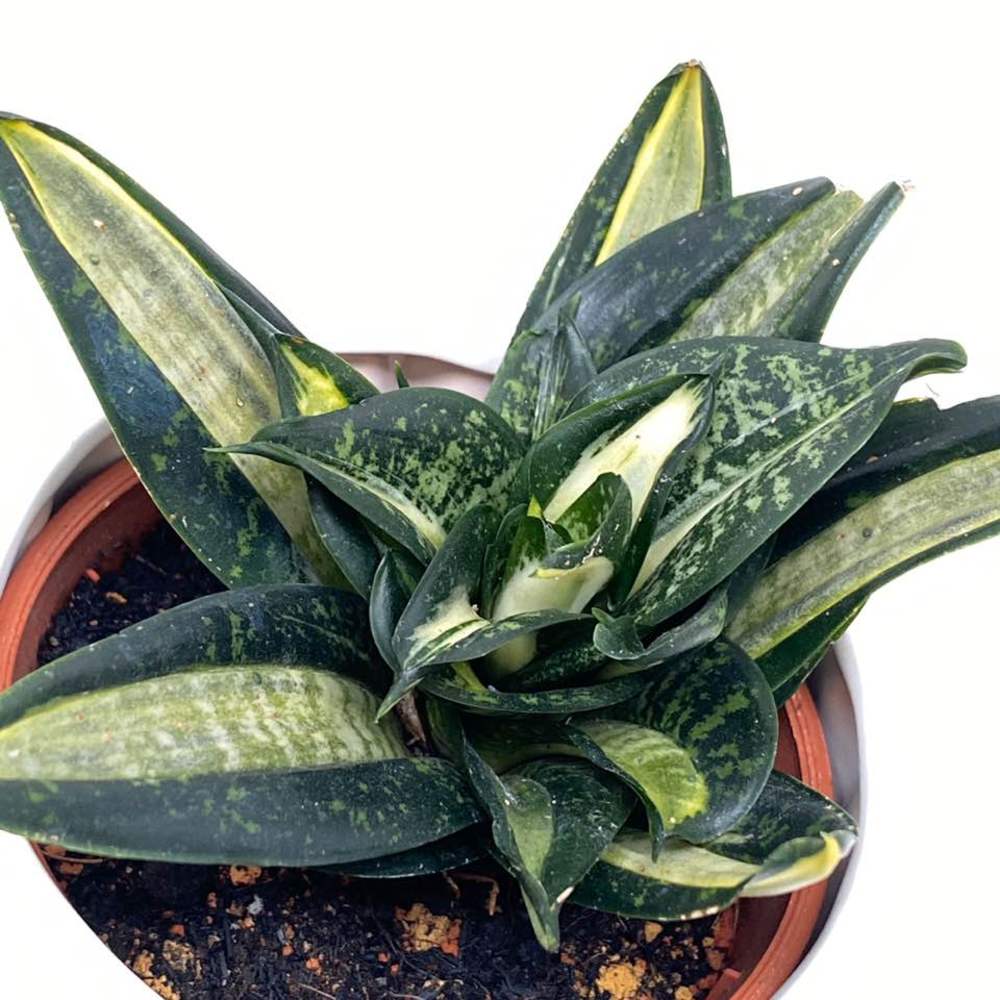Plant Experience
Detail
Sansevieria trifasciata ‘Hahnii’ is a lovely, short growing form of Sansevieria trifasciata which remains less than a foot (30 cm) high as it sends out new shoots, and spreads into a cluster of leafy funnels. It is a stemless perennial succulent plant with dark green leaves with clear horizontal bands, arranged in an attractive rosette. Sansevieria trifasciata can bloom in summer or autumn with sweetly fragrant greenish white flowers, but this cultivar rarely seems to do so.
How to Grow and Care
Place Sansevierias in moderately bright or filtered light. Good locations include a spot in front of a north-facing window or in front of a bright, sunny window covered by a sheer curtain. Although the plant tolerates low light, bright light brings out the colors in the leaves. However, intense light may cause the edges of the leaves to turn yellow.
Allow the soil to dry completely before watering, and then water deeply until water drips through the drainage hole. Allow the pot to drain and then discard water that remains in the saucer. Never allow the soil to become soggy and never let the pot stand in water. Water sparingly throughout the winter. Like most succulent plants that store water in their leaves, Sansevieria rots quickly in excessively wet soil.
Feed the plant once every three weeks throughout the summer. Use a general-purpose fertilizer for houseplants diluted to one-half the strength suggested on the container. Sansevieria is a light feeder and too much fertilizer makes the leaves fall over.
Light
Place Sansevierias in moderately bright or filtered light. Good locations include a spot in front of a north-facing window or in front of a bright, sunny window covered by a sheer curtain. Although the plant tolerates low light, bright light brings out the colors in the leaves. However, intense light may cause the edges of the leaves to turn yellow.
Watering
Allow the soil to dry completely before watering, and then water deeply until water drips through the drainage hole. Allow the pot to drain and then discard water that remains in the saucer. Never allow the soil to become soggy and never let the pot stand in water. Water sparingly throughout the winter. Like most succulent plants that store water in their leaves, Sansevieria rots quickly in excessively wet soil.
Temperature
Place Sansevieria in average room temperatures. Protect the plant from drafts and cold temperatures as it is damaged at temperatures below 50 degrees Fahrenheit (10 degrees Celsius).
Feeding
Feed the plant once every three weeks throughout the summer. Use a general-purpose fertilizer for houseplants diluted to one-half the strength suggested on the container. Sansevieria is a light feeder and too much fertilizer makes the leaves fall over.
Repotting
Repot the plant into a container one size larger only when the roots outgrow the pot. Sansevieria thrives — and may produce blooms — when its roots are crowded. Fill the container with a lightweight commercial potting soil. Some people repot plants only when the roots crack the pot.
Remove dust by wiping the leaves with a soft, damp cloth. Avoid commercial leaf-shine products, which may damage the leaves or cause them to take on a rusty appearance. If any leaves are damaged or blemished, cut them off, even with the soil.Sansevieria trifasciata ‘Hahnii’ is a lovely, short growing form of Sansevieria trifasciata which remains less than a foot (30 cm) high as it sends out new shoots, and spreads into a cluster of leafy funnels. It is a stemless perennial succulent plant with dark green leaves with clear horizontal bands, arranged in an attractive rosette. Sansevieria trifasciata can bloom in summer or autumn with sweetly fragrant greenish white flowers, but this cultivar rarely seems to do so.
How to Grow and Care
Place Sansevierias in moderately bright or filtered light. Good locations include a spot in front of a north-facing window or in front of a bright, sunny window covered by a sheer curtain. Although the plant tolerates low light, bright light brings out the colors in the leaves. However, intense light may cause the edges of the leaves to turn yellow.
Allow the soil to dry completely before watering, and then water deeply until water drips through the drainage hole. Allow the pot to drain and then discard water that remains in the saucer. Never allow the soil to become soggy and never let the pot stand in water. Water sparingly throughout the winter. Like most succulent plants that store water in their leaves, Sansevieria rots quickly in excessively wet soil.
Feed the plant once every three weeks throughout the summer. Use a general-purpose fertilizer for houseplants diluted to one-half the strength suggested on the container. Sansevieria is a light feeder and too much fertilizer makes the leaves fall over.
Light
Place Sansevierias in moderately bright or filtered light. Good locations include a spot in front of a north-facing window or in front of a bright, sunny window covered by a sheer curtain. Although the plant tolerates low light, bright light brings out the colors in the leaves. However, intense light may cause the edges of the leaves to turn yellow.
Watering
Allow the soil to dry completely before watering, and then water deeply until water drips through the drainage hole. Allow the pot to drain and then discard water that remains in the saucer. Never allow the soil to become soggy and never let the pot stand in water. Water sparingly throughout the winter. Like most succulent plants that store water in their leaves, Sansevieria rots quickly in excessively wet soil.
Temperature
Place Sansevieria in average room temperatures. Protect the plant from drafts and cold temperatures as it is damaged at temperatures below 50 degrees Fahrenheit (10 degrees Celsius).
Feeding
Feed the plant once every three weeks throughout the summer. Use a general-purpose fertilizer for houseplants diluted to one-half the strength suggested on the container. Sansevieria is a light feeder and too much fertilizer makes the leaves fall over.
Repotting
Repot the plant into a container one size larger only when the roots outgrow the pot. Sansevieria thrives — and may produce blooms — when its roots are crowded. Fill the container with a lightweight commercial potting soil. Some people repot plants only when the roots crack the pot.
Remove dust by wiping the leaves with a soft, damp cloth. Avoid commercial leaf-shine products, which may damage the leaves or cause them to take on a rusty appearance. If any leaves are damaged or blemished, cut them off, even with the soil.
How to Grow and Care
Place Sansevierias in moderately bright or filtered light. Good locations include a spot in front of a north-facing window or in front of a bright, sunny window covered by a sheer curtain. Although the plant tolerates low light, bright light brings out the colors in the leaves. However, intense light may cause the edges of the leaves to turn yellow.
Allow the soil to dry completely before watering, and then water deeply until water drips through the drainage hole. Allow the pot to drain and then discard water that remains in the saucer. Never allow the soil to become soggy and never let the pot stand in water. Water sparingly throughout the winter. Like most succulent plants that store water in their leaves, Sansevieria rots quickly in excessively wet soil.
Feed the plant once every three weeks throughout the summer. Use a general-purpose fertilizer for houseplants diluted to one-half the strength suggested on the container. Sansevieria is a light feeder and too much fertilizer makes the leaves fall over.
Light
Place Sansevierias in moderately bright or filtered light. Good locations include a spot in front of a north-facing window or in front of a bright, sunny window covered by a sheer curtain. Although the plant tolerates low light, bright light brings out the colors in the leaves. However, intense light may cause the edges of the leaves to turn yellow.
Watering
Allow the soil to dry completely before watering, and then water deeply until water drips through the drainage hole. Allow the pot to drain and then discard water that remains in the saucer. Never allow the soil to become soggy and never let the pot stand in water. Water sparingly throughout the winter. Like most succulent plants that store water in their leaves, Sansevieria rots quickly in excessively wet soil.
Temperature
Place Sansevieria in average room temperatures. Protect the plant from drafts and cold temperatures as it is damaged at temperatures below 50 degrees Fahrenheit (10 degrees Celsius).
Feeding
Feed the plant once every three weeks throughout the summer. Use a general-purpose fertilizer for houseplants diluted to one-half the strength suggested on the container. Sansevieria is a light feeder and too much fertilizer makes the leaves fall over.
Repotting
Repot the plant into a container one size larger only when the roots outgrow the pot. Sansevieria thrives — and may produce blooms — when its roots are crowded. Fill the container with a lightweight commercial potting soil. Some people repot plants only when the roots crack the pot.
Remove dust by wiping the leaves with a soft, damp cloth. Avoid commercial leaf-shine products, which may damage the leaves or cause them to take on a rusty appearance. If any leaves are damaged or blemished, cut them off, even with the soil.Sansevieria trifasciata ‘Hahnii’ is a lovely, short growing form of Sansevieria trifasciata which remains less than a foot (30 cm) high as it sends out new shoots, and spreads into a cluster of leafy funnels. It is a stemless perennial succulent plant with dark green leaves with clear horizontal bands, arranged in an attractive rosette. Sansevieria trifasciata can bloom in summer or autumn with sweetly fragrant greenish white flowers, but this cultivar rarely seems to do so.
How to Grow and Care
Place Sansevierias in moderately bright or filtered light. Good locations include a spot in front of a north-facing window or in front of a bright, sunny window covered by a sheer curtain. Although the plant tolerates low light, bright light brings out the colors in the leaves. However, intense light may cause the edges of the leaves to turn yellow.
Allow the soil to dry completely before watering, and then water deeply until water drips through the drainage hole. Allow the pot to drain and then discard water that remains in the saucer. Never allow the soil to become soggy and never let the pot stand in water. Water sparingly throughout the winter. Like most succulent plants that store water in their leaves, Sansevieria rots quickly in excessively wet soil.
Feed the plant once every three weeks throughout the summer. Use a general-purpose fertilizer for houseplants diluted to one-half the strength suggested on the container. Sansevieria is a light feeder and too much fertilizer makes the leaves fall over.
Light
Place Sansevierias in moderately bright or filtered light. Good locations include a spot in front of a north-facing window or in front of a bright, sunny window covered by a sheer curtain. Although the plant tolerates low light, bright light brings out the colors in the leaves. However, intense light may cause the edges of the leaves to turn yellow.
Watering
Allow the soil to dry completely before watering, and then water deeply until water drips through the drainage hole. Allow the pot to drain and then discard water that remains in the saucer. Never allow the soil to become soggy and never let the pot stand in water. Water sparingly throughout the winter. Like most succulent plants that store water in their leaves, Sansevieria rots quickly in excessively wet soil.
Temperature
Place Sansevieria in average room temperatures. Protect the plant from drafts and cold temperatures as it is damaged at temperatures below 50 degrees Fahrenheit (10 degrees Celsius).
Feeding
Feed the plant once every three weeks throughout the summer. Use a general-purpose fertilizer for houseplants diluted to one-half the strength suggested on the container. Sansevieria is a light feeder and too much fertilizer makes the leaves fall over.
Repotting
Repot the plant into a container one size larger only when the roots outgrow the pot. Sansevieria thrives — and may produce blooms — when its roots are crowded. Fill the container with a lightweight commercial potting soil. Some people repot plants only when the roots crack the pot.
Remove dust by wiping the leaves with a soft, damp cloth. Avoid commercial leaf-shine products, which may damage the leaves or cause them to take on a rusty appearance. If any leaves are damaged or blemished, cut them off, even with the soil.
Album (11)

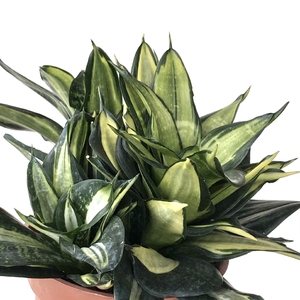
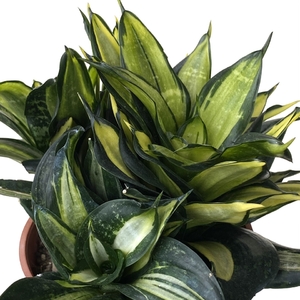

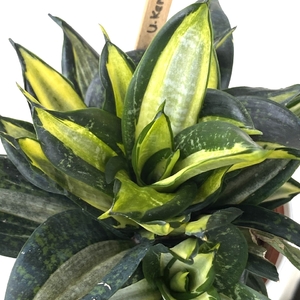
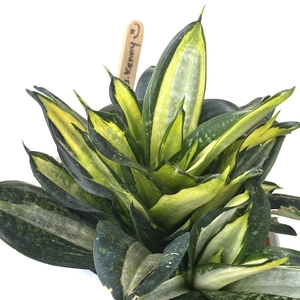
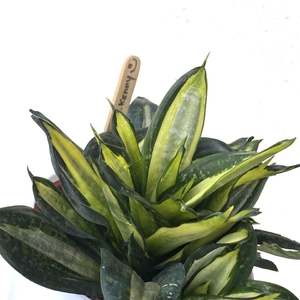
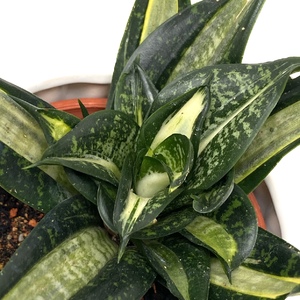
kensong
2021-01-06

Overgrown and crowded.






kensong
2020-11-08

Mother not doing well but here's a pup


kensong
2020-06-07

From Celine. RM22.50






kensong
2019-11-12

This is my first growing diary. Gift from Mona.
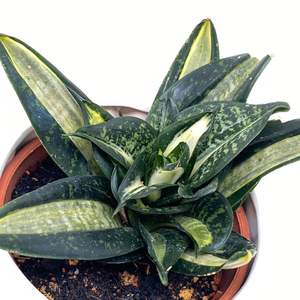
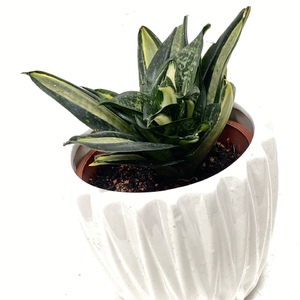
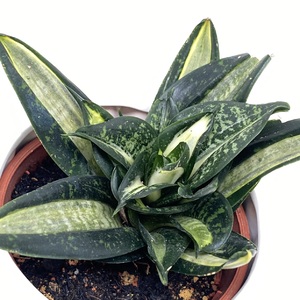





Elite Article


